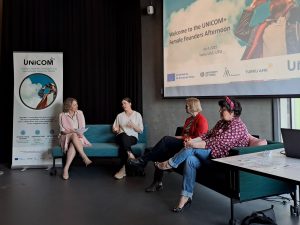Yhä useampi nuori Suomessa kokee yksinäisyyttä, ulkopuolisuutta ja eristäytyneisyyttä. Tähän ongelmaan pyritään puuttumaan NOPPA-hankkeella, jossa osallisuutta lisätään pelillistämisen avulla. …
Tekijät | Authors
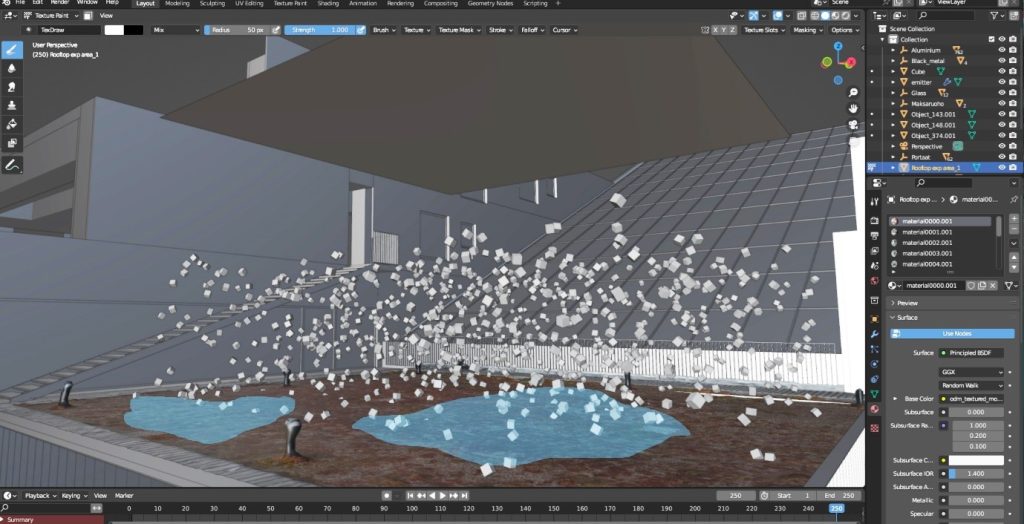
Visualizing stormwater behavior in urban environments using photogrammetry and 3D design – a conceptual framework
Urbanization and climate change have increased the need for effective stormwater management. However, traditional stormwater management systems are often lacking in functionality and design quality. This article proposes a workflow for generating visual and functional models for stormwater management design. The workflow is drawn from novel photogrammetry tools and the application of 3D modeling software using aerial data from drones for the urban context, 3D modeling software can be used for simulating rain events and water flow, allowing the analysis of detailed landscape architecture designs.
Introduction
Excessive and uncontrolled urban stormwater runoff is a significant environmental challenge that threatens human and ecological health across the world. The continued urbanization and changing climate have exacerbated the problem, highlighting the need for effective stormwater management solutions. However, traditional stormwater systems often lack in combined functionality and design quality, leaving much to be desired in terms of visual and architectural quality.
Traditional stormwater systems are often lacking in combined functionality and design quality
Contemporary stormwater management relies mainly on piping systems forming a complex infrastructure with a designated life cycle. A dense artificial urban structure limits the use of natural open creeks gathering stormwater from the catchment areas. However, revitalizing the existing and former creek areas is important not only for stormwater management but also for the urban biodiversity and provision of recreational areas for the inhabitants of the cities, such as the Kupittaa park in the City of Turku (picture 1). To that end, nature-based solutions hold the key to resilient and sustainable urban stormwater systems.
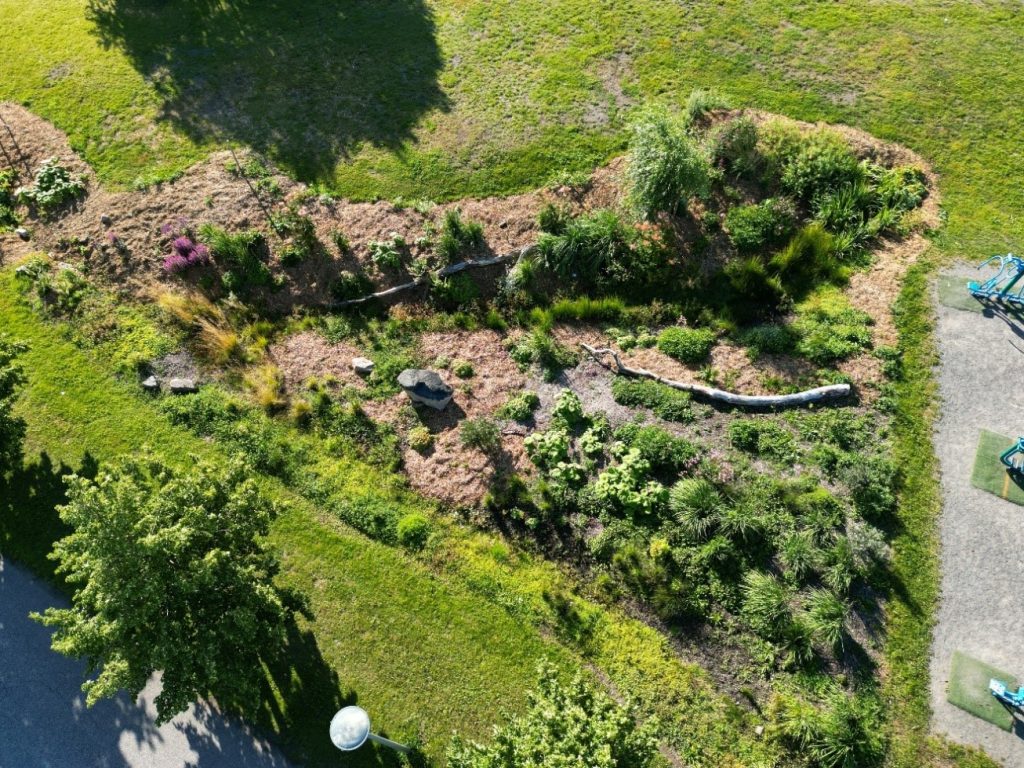
Picture 1. Retention pool for stormwater in the Kupittaa park in the city of Turku
The key notion in designing and innovating holistic stormwater systems and green cities is understanding the scale of design and how the solutions connect to each other on different design scales. The smallest unit of design is a single site or urban block. The smallest scale is also the prevailing form of urban investment. However, larger-scale city districts or even new cities are also being planned and implemented, yet urban densification and renewal is the main form of transformation when thinking of moving towards green and nature-based cities.
An innovative example is the Low2No sustainable city development competition organized by Sitra, the Finnish Innovation Fund, delivered a proposal suggesting integrating functional nature-based stormwater components into the streetscape. Scaling such solutions at the city level as part of a renovation and restructuring program would enable the transitions of entire cities to more resilient and sustainable forms preventing flooding and mitigating the impacts of climate change. The above solutions are not entirely new and there are plenty of methods that could already be applied.
One of the key hindrances is the design and investment decision-making processes that would have to demonstrate clear financial, functional, and qualitative benefits over conventional urban systems. To that end, this article shows the results of a method for visualizing and demonstrating the functionality of nature-based urban stormwater designs. Here, we propose to use Blender: a 3D modeling software for generating visual and functional models for stormwater management design.
The method was first tested and developed by using the rooftop of the EduCity campus building as an example (picture 2).
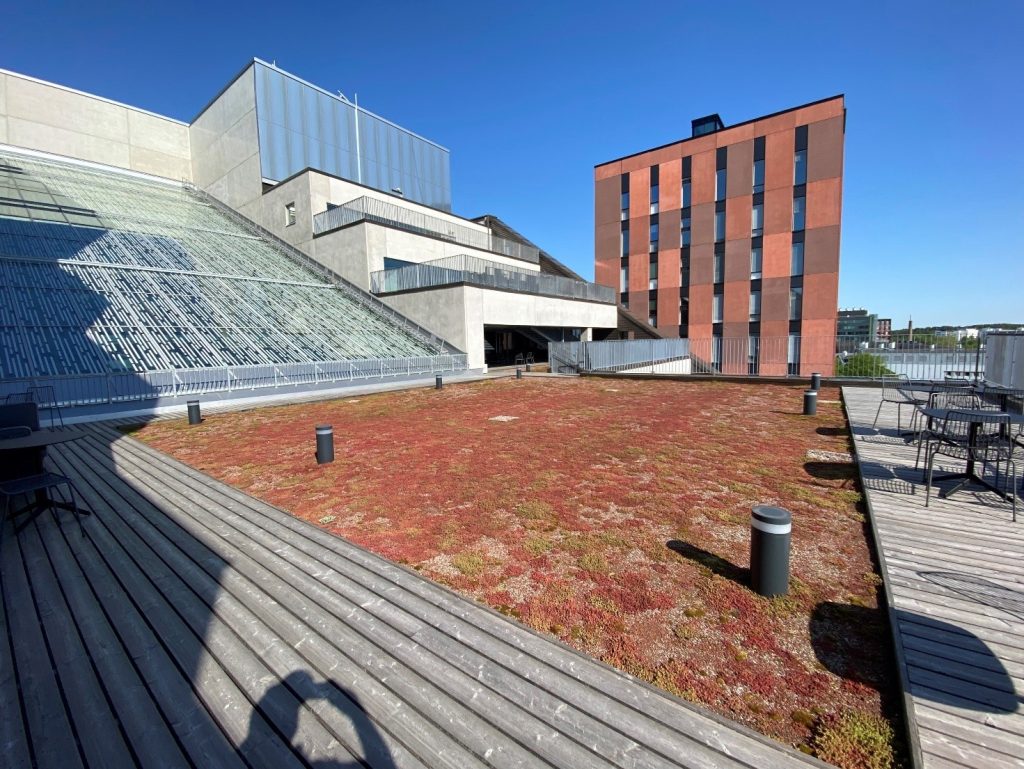
Picture 2. EduCity’s green roof of rooftop terrace that was used as a test environment.
The rain events were simulated with Blender design and simulation software. The green roof was assigned with physical properties simulating the flow and infiltration of the excessive stormwater (figure 1).

Figure 1. A screenshot for a first test simulation with water-like particles with adjustable properties (size, shape, amount, density) when simulating rain events on Blender.
Results
Figures 2 and 3 show a conventional solution with a bitumen roof surface as a starting point, which is then compared against different nature-based solutions. In figures 4 and 5 the results of rainfall simulation for the current rooftop design at the test site are shown. Figures 6 and 7 show the designed intensive green roof results. All different versions were exposed to similar simulated rain events to analyze the performance of the rooftop for retaining stormwater and visual amenities.
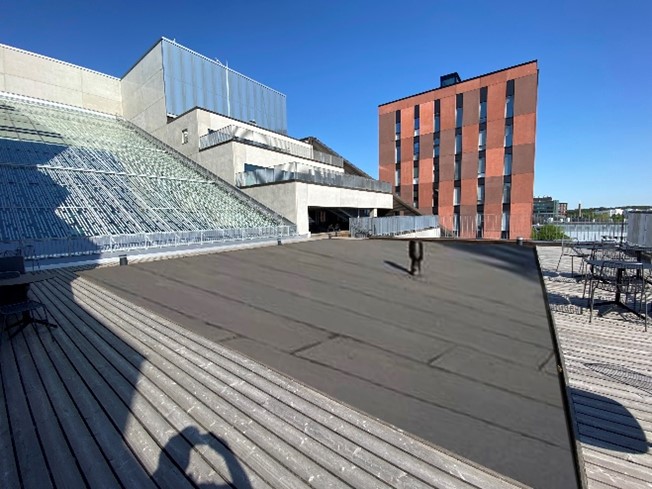
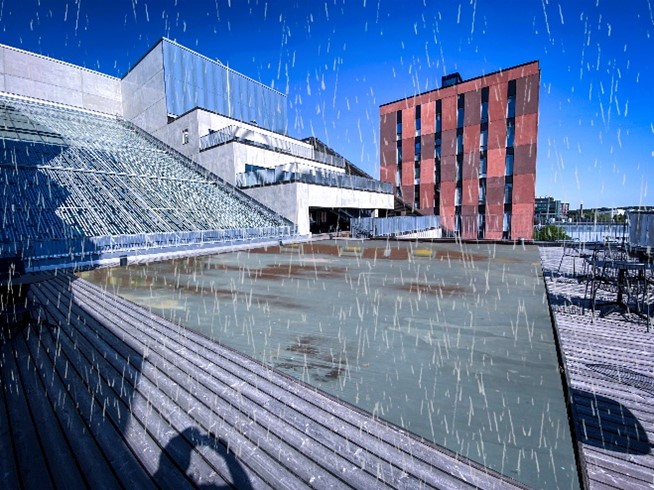
Figures 2 and 3. Visualization of the test site with a simulated hard roof surface with bitumen waterproofing membrane in dry conditions and during simulated rain.
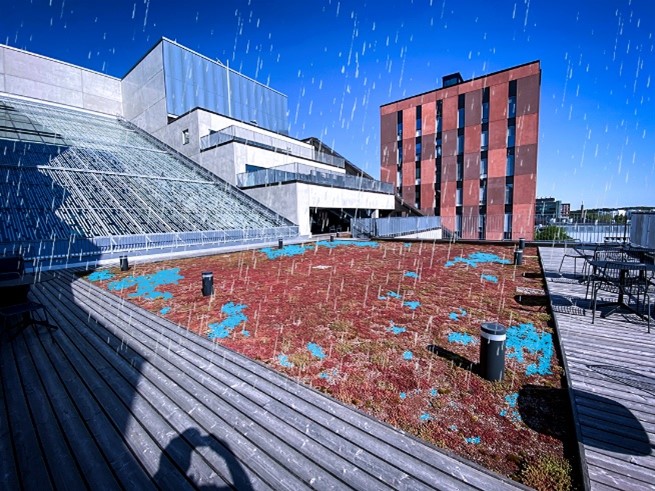
Figures 4 and 5. Visualization of the test site in its current state with sedum extensive green roof in dry conditions and during simulated rain.
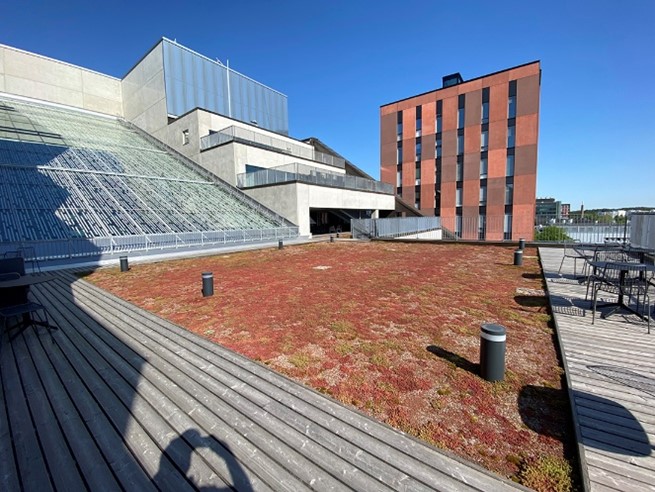
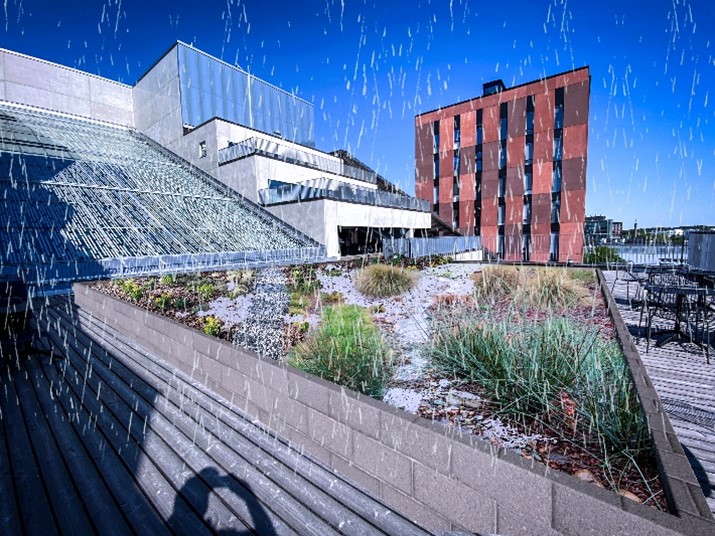
Figures 6 and 7. Visualization of the test site with the designed intensive green roof in dry conditions and during simulated rain.
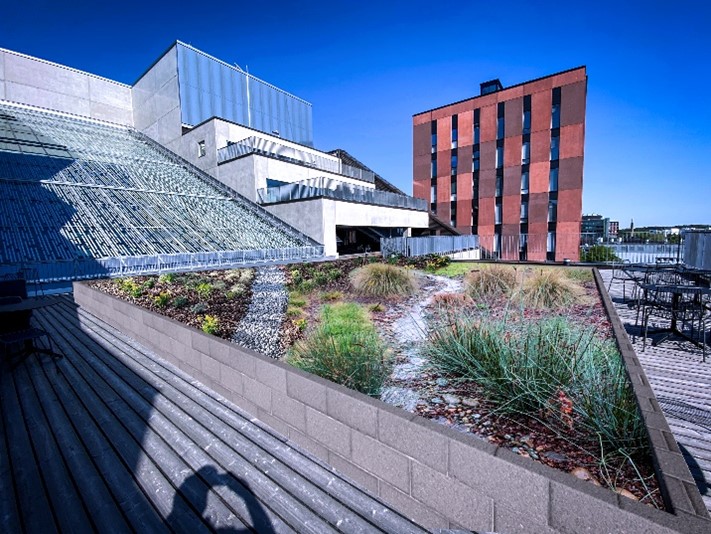
The upcoming work in ISMO project focuses on the measurement of simulated output flows of stormwater in each design alternative. Further, the physical properties of roof material, namely infiltration capacity, flow resistance, evaporation, and evapotranspiration should be calibrated and validated. To that end, the analysis of the utilities, such as the infiltration capacities, and amenities including, among others, the visual appearance becomes possible. Further, the approach can be connected to the actual need and sizing of the stormwater reservoirs in the development of urban areas located in a dense urban fabric.
Conclusion
The promotion of nature-based solutions calls for both qualitative and quantitative methods for helping decision-makers in sustainable urban investments. The value of nature-based solutions and their systemic impacts should be communicated in a way that promotes the adoption of more sustainable and resilient solutions with decreased lifecycle costs.
The current software methods targeted to analyze stormwater systems provide limited means for exploring detailed design solutions and their visual and functional properties. However, the available pool of modeling and game engine software solutions offer alternatives to the current practices. This article demonstrated a method for visual decision-making support addressing both qualitative and quantitative design features in a small-scale design context. Such small-scale urban development projects form the basis of nature-based and city-wide stormwater systems when adopted at a large scale.
Blender offers an initial method for visual decision-making for investment decisions in functional landscape design
The findings of this study show that Blender offers an initial method for visual decision-making for investment decisions in functional landscape design for stormwater management. The software’s ability to incorporate aerial data and simulate rain events and water flow provides a comprehensive and detailed approach to stormwater management design. The proposed methodology using Blender can contribute to the development of functional and aesthetically pleasing stormwater management systems, meeting the challenges of urbanization and climate change. Future studies should investigate the use of game engines as a starting point for the nature-based and systemic design of landscape architecture handling the problems related to stormwater management in the face of climate change.
Link to ISMO project’s webpage: https://ismo.turkuamk.fi/








